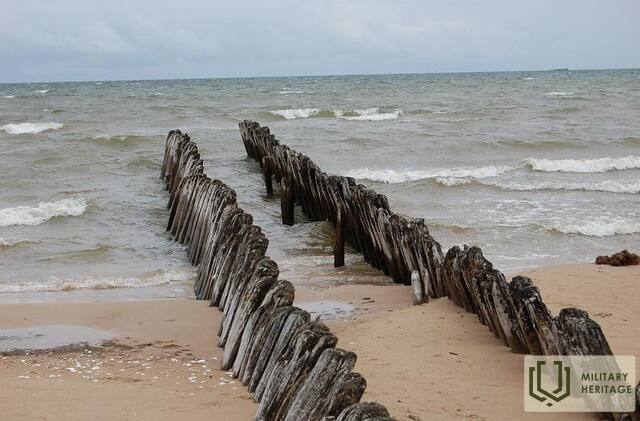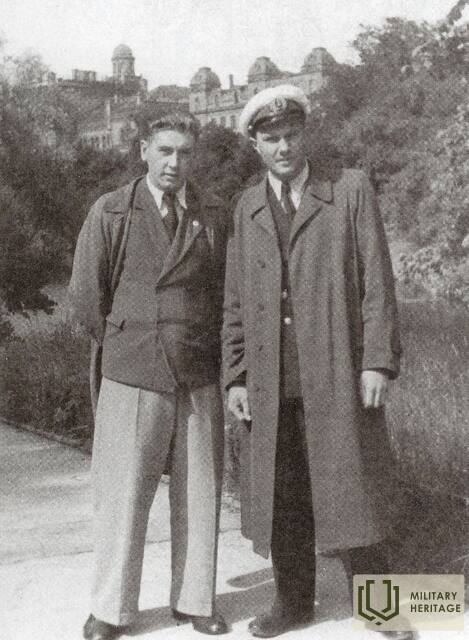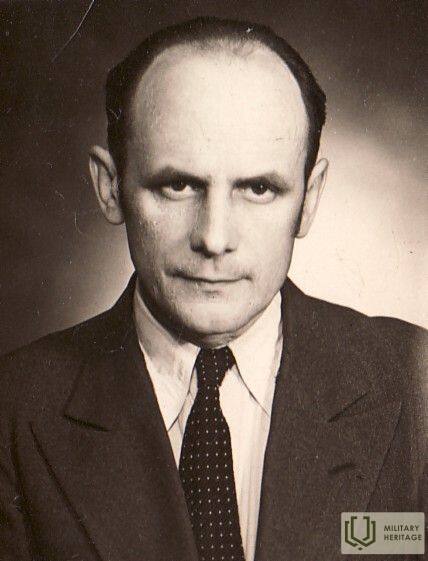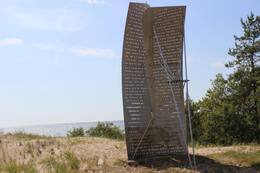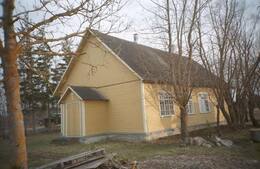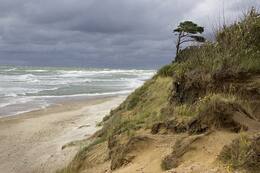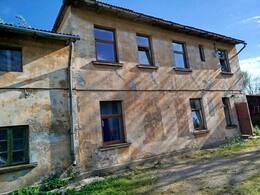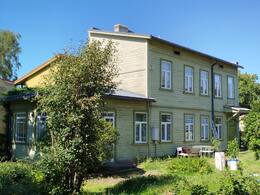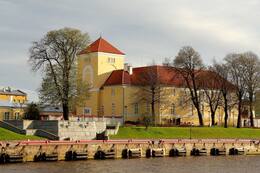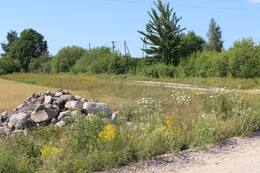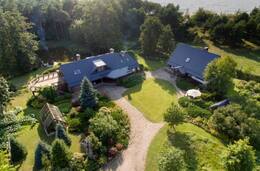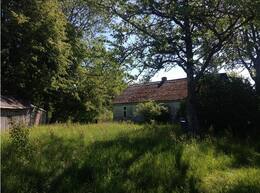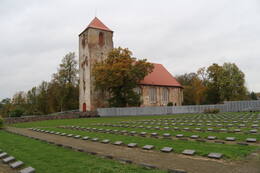Беженцы Второй мировой войны
II Вторая мировая война
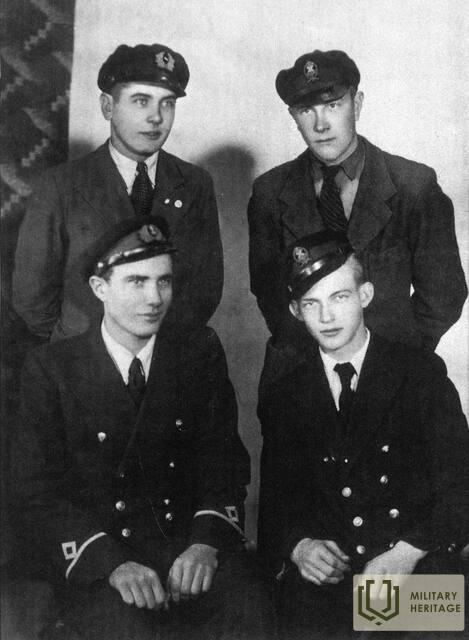
Репрессии, аресты и депортации во время первой оккупации Советской Армией с 1940 по 1941 годы глубоко потрясли многих латышей. В результате, когда в 1944 году Советская армия снова подошла к Латвии и ей угрожала вторая оккупация, более 200 000 (~ 10%) латышей покинули свои дома в огне войны и искали убежища на западе, на территории, контролируемой немецкому режиму, потому что не было уверенности, что коммунисты не отправят их в Сибирь. Около 160 000 из них были мирными жителями, в основном беженцами; В Латышский легион было зачислено 30 000 солдат, а 10 000 были отправлены на работу в Германию. Во время войны много людей погибло во время войны, многие из них были застигнуты врасплох советской армией, так что в конце войны на территории бывшей Германии осталось около 114 000 латышей. Не все беженцы прибыли в Германию. Около 3000 латвийских беженцев были переправлены в Швецию на небольших рыбацких лодках через море в тайных рыболовных поездках, к которым позже присоединились другие латыши из Дании и Германии. Покидая свои дома, почти все беженцы думали, что отсутствие будет временным, что армия союзников будет продолжать войну до тех пор, пока не будут освобождены все земли, захваченные коммунистами. Эти ожидания не оправдались, и со временем беженцам пришлось искать постоянное пристанище за пределами Европы.
Дополнительные источники информации
http://pedas.lapamuzejs.lv/?page_id=1180 (просмотрено 4 ноября 2021 г.)
https://en.wikipedia.org/wiki/Первая_мировая война_Латвия
Связанная хронология
Связанные объекты
Памятный знак беженцам "Парус надежды" в Юркалне
Памятный знак "Парус надежды", посвященный беженцам Второй мировой войны, которые в 1944 и 1945 годах пересекли Балтийское море на лодках и добрались до острова Готланд в Швеции. Мемориал находится в Освалки на дюнах между морем и шоссе Вентспилс-Лиепая, рядом с остановкой общественного транспорта "Кайяс". Его создал скульптор Гиртс Бурвис, который воплотил его в виде паруса надежды, символизирующего память о латышских беженцах.
С осени 1944 года по весну 1945 года, опасаясь возобновления советской оккупации, но не желая эвакуироваться в разрушенную и находящуюся под угрозой Германию, некоторые жители Латвии пытались добраться по морю до ближайшей нейтральной страны - Швеции. Часть судов была организована Латвийским центральным советом при помощи западных союзников, в результате чего в Юркалнесской волости образовался один из крупнейших пунктов сосредоточения беженцев. Кроме лодок, организованных Латвийским центральным советом, через море переправлялись и другие лодки. По оценкам, около 5000 человек смогли пересечь море. Число погибших неизвестно, так как учет беженцев, покидающих Курземское побережье, не велся.
Плавание было опасным, поскольку беженцам угрожали немецкие патрули на побережье и в море, морские мины, советские самолеты и военные корабли, а также штормы, поскольку переправа часто осуществлялась на неприспособленных и перегруженных катерах и лодках без достаточного запаса топлива и продовольствия, морских карт и навигационных приборов. Отплытие из Латвии осуществлялось тайно. Местом назначения судов был остров Готланд, а путешествия чаще всего начинались на западном побережье Курляндии (от Юркалне до Готланда 90 морских миль или около 170 километров по полету ворона).
Памятник беженцам, эмигрировавшим осенью 1944 года в Швецию Балтийским морем
Памятник стоит на морском побережье, на мысе Пуйсе.
В 1944 году около 80 000 человек бежали на запад от вторгшейся в Эстонию Красной Армии, многие и через море. Этот памятник, посвященный массовому бегству того времени, был спроектирован Айваром Симсоном. Идея возникла у Хейди Иваск, которая когда-то на руках у мамы ждала, как и сотни других беженцев, лодку на побережье Пуйсе. Памятник воздвигнули по инициативе Эстонского союза Memento.
Молельный дом Пыгари
Молельный дом расположен в деревне Пыгари-Сасси, недалеко от отметки 1 км на дороге Тууру-Пуйсе. 18 сентября 1944 года, на следующий день после того, как немецкая армия начала отступление, премьер-министр Эстонии Юри Улуотс, исполняющий обязанности главы государства, привел к присяге новое правительство Эстонской Республики. Правительство приняло резолюцию о восстановлении независимости Эстонии и о сохранении нейтралитета в войне. Инаугурация правительства означала, что Красная Армия не "освободила" Эстонию от немецких оккупационных войск, а скорее оккупировала независимое государство. Кабинет министров Отто Тиифа провел свое последнее заседание в баптистском молельном доме в Пыгари 22 сентября 1944 года. Эта историческая встреча отмечена памятной табличкой, открытой премьер-министром Эстонии Мартом Лааром в 1999 году. Члены кабинета министров правительства Тиифа ждали в молельном доме обещанную моторную лодку для эвакуации в Швецию. Однако судно задержалось, прибыв только 29 сентября. Лишь государственному секретарю Хельмуту Маанди удалось бежать. Он вез с собой копию Riigi Teataja, подтверждающую преемственность Эстонской Республики.
Побережье Мазирбе, откуда в 1944 году переправлялись лодки беженцев в Швецию.
Побережье Мазирбе было важным местом во Второй мировой войне, откуда в 1944 году осуществлялось движение лодок с беженцами в Швецию.
Крутой берег Сталдзене, с которого в 1944 году переправляли лодки беженцев в Швецию.
В 1944 году шло активное движение лодок с беженцами к берегам Швеции из Сталдзене.
Дом в Вентспилсе, где в 1944 году жила связная ЛКП Валентина Яунземе (Ласмане).
Дом на улице Лауку 4, Вентспилс, где жила и работала учительница Валентине Ласмане (род. Яунземе) (1916–2018), которая в 1944–1945 гг. работал связным LCP и членом Вентспилсской коммуникационной группы. Жил в Швеции после Второй мировой войны. Она собрала показания 130 беженцев с лодок в публикации «Через море 1944/1945». (Стокгольм, 1990), а историю собственной жизни В. Ласмане можно прочитать в книге «Ночь не только для сна» (Рига, 2020). В 2000 году она была награждена Орденом Трех Звезд. Умер в возрасте 102 лет в 2018 году в пригороде Стокгольма Тебия.
Здание в Вентспилсе, где в 1944-1945 гг. В 2010 году представитель ЛКП и организатор движения лодок с беженцами доктор проживал в Курземе. Вальдемарс Гинтерс
Дом на улице Катринес, 4, Вентспилс, где работал археолог Валдемар Эинтерс.
С октября 1944 года по 8 мая 1945 года представителем ЛКП в Курземе был археолог Вальдемарс Чинтерс (прозвища «Доктор», «Садовник») (1899–1979). Участник Освободительной войны Латвии, директор Государственного исторического музея и доцент Латвийского университета. Награжден орденом Лачплешской войны и орденом Трех звезд. Один из подписантов меморандума ЛКП от 17 марта 1944 года. Жил в Швеции после Второй мировой войны. С 1949 по 1979 год председатель правления Латвийского национального фонда.
Тюрьма в замке Ливонского ордена во время Второй мировой войны
1944-1945 гг. в тюрьме, устроенной в Лифляндском замке Оден. В 2016 году были задержаны несколько членов коммуникационной группы ЛКП Вентспилс и грузчики лодок с беженцами.
Дорога к домам «Гриниеку» в Варвеской волости
Дорога к дому «Гриниеку» в Варвеской волости, где в 1944 году располагалось одно из основных поселений лодочных беженцев на побережье Курземе.
Временное жилье беженцев «Варве хижины»
Варвесские «хижины», место в Вентспилсском уезде, служившее временным приютом для латвийских беженцев, ожидавших прибытия лодок с Готланда в 1944 году.
Дома «Бамбали» – одно из основных мест размещения лодочных беженцев
Отреставрированные дома «Бамбали» в Ошвалках Юркалнской волости были одним из основных мест поселения лодочных беженцев на побережье Курземе.
Дом «Лаукгали», место жительства писателя Карлиса Скалбе
«Лаукгали» в Юркалнской волости, месте жительства писателя Карлиса Скалбе в октябре-ноябре 1944 года, в ожидании корабля беженцев в Швецию.
Постоянная экспозиция Павилостского краеведческого музея
В Павилостском краеведческом музее можно осмотреть выставку «Павилоста - закрытая зона» о жизни Павилосты в годы советской оккупации - исполнительной власти, приграничной зоне, рыбном колхозе, культурной и повседневной жизни. В дополнение к постоянной экспозиции была представлена интерактивная эмоционально насыщенная цифровая выставка на двух языках и аудиовизуальная инсталляция, где можно посмотреть фильм о Павилосте.
В музее создана новая выставка «Золотые песчинки Павилосты». Цифровая выставка позволяет увидеть события прошлого, развитие Павилосты и самые важные события с 1918 года до наших дней. О военном наследии рассказывает раздел освободительной войны о борцах за свободу Латвии и временах советской оккупации
Лестенская лютеранская церковь
Находится в Тукумском районе, Лестене, рядом с костелом.
Строительство Братского кладбища в Лестене началось в 1998 году. Это второе по величине кладбище солдат в Латвии, где вместе похоронено более 1300 латышских легионеров. Только после восстановления Латвийской Республики стало возможным хоронить из разных мест латышских солдат, погибших во Второй мировой войне.
Латышский легион — боевая единица немецкой армии, сформированная в основном из незаконно мобилизованных латышей. Солдаты воспринимали свое присутствие в легионе как борьбу за восстановление независимости Латвии, несмотря на то, что она происходила в рядах немецких вооруженных сил и что Германия оккупировала Латвию. Не было другой военной силы, которая могла бы задержать возвращение советской оккупации. Латышские легионеры сражались против Красной Армии, отменившей независимость Латвии, уничтожившей ее армию и совершившей преступления против мирного населения. В рядах германской армии сражалось от 110 000 до 115 000 солдат, и от 30 000 до 50 000 из них ушли на поле боя.
Сегодня в Лестене можно увидеть Братское кладбище, рядом с которым находится Лестенская церковь. Это выдающийся образец сакрального искусства барокко. В старой церковной пивной можно ознакомиться с экспозицией, посвященной истории Латышского легиона. Центральный образ Братского кладбища «Родина-Мать-Латвия» создал скульптор Арта Думпе. Неподалеку находится усадьба Лестене, которая до Второй мировой войны принадлежала генералу латвийской армии Мартиньшу Хартманису.
Экскурсии в Лестенскую церковь можно заказать у главы прихода Лестенской евангелическо-лютеранской церкви Ингуны Кокиной, тел. +371 29993743.
Связанные истории
Успешный побег Валентины Ласманес
Биографический рассказ Валентины Ласманес о том, как ей удалось бежать из-под стражи во время немецкой оккупации.
Празднование последнего дня рождения Карлиса Скалбеса на побережье Курземе
7 ноября 1944 года воспоминания о 65-летии поэта Карлиса Скалбе в Юркалнском «Лаукгали» принесли светлое настроение в поселение латвийских беженцев на Курземском побережье. Всего четыре дня спустя Карлис Скалбе отправился на лодке в Швецию в качестве беженца. Это был день, когда Кярлис Скалбе в последний раз отмечал свой день рождения.
Тайная и опасная деятельность Вальдемара Гюнтера
Имя Валдемара Эинтера было последней надеждой многих латвийских беженцев бежать в Швецию. Слишком большое внимание со стороны беглецов было опасно, и поэтому Гюнтер сохранял секретность.
Место, где лодки беженцев переправлялись с берегов Курляндии в Швецию, возле домов «Пажи».
Одним из важных мест переселения стал район домов «Паж», где сейчас установлен памятник «Парус надежды». «Лодки приходили регулярно, и большинство людей уходили из «Пажи»», - вспоминает И. Фрейберг.




